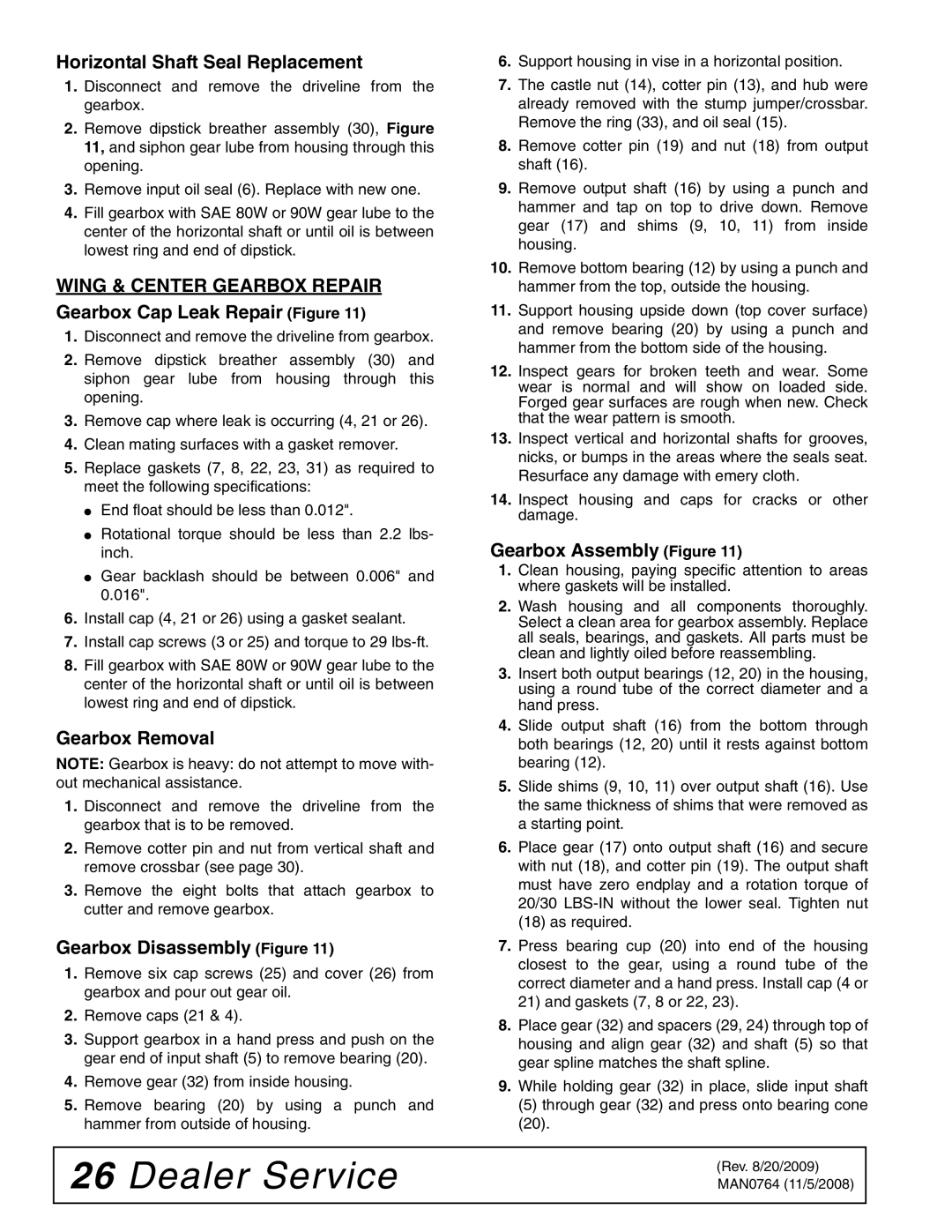BW2400X, BW1620XQREV, BW2400XQ, BW1620X, BW1620XQ specifications
Woods Equipment has established itself as a trusted name in the landscape and agricultural equipment sector, offering a wide range of high-performance products tailored to meet various needs. Among its standout offerings are the BW1620XQ, BW1620X, BW2400XQ, BW1620XQREV, and BW2400X models, known for their robust design and exceptional functionality.The BW1620XQ is designed for efficient brush cutting, making it an ideal choice for land maintenance and clearing dense underbrush. One of its main features is the heavy-duty construction, which ensures durability even under the toughest conditions. This model is equipped with a reinforced deck, providing added strength and longevity. It also features a powerful PTO-driven cutting system, allowing it to tackle tough growth with ease.
The BW1620X model offers similar capabilities to the BW1620XQ but is optimized for lighter tasks and smaller properties. It shines in residential applications, where maneuverability and ease of use are paramount. This model is lightweight and easy to attach, making it a favorite among homeowners who require a reliable tool for maintaining their yards and gardens.
For those requiring larger-scale solutions, the BW2400XQ provides increased cutting width and efficiency. This model excels in farm and large property applications, where speed and power are essential. Featuring advanced blade technology, the BW2400XQ offers superior cutting performance and reduced maintenance needs. Additionally, it boasts adjustable height settings, allowing users to customize their cutting experience based on the terrain and type of vegetation.
The BW1620XQREV is a revolutionary model that incorporates newer technology for even better performance and user experience. This model offers enhanced features such as improved blade design for finer cuts and an innovative quick-attach system that enables fast connectivity and disconnection from tractors.
Finally, the BW2400X model is the standard version of the BW2400XQ, providing similar power and efficiency without some of the specialized features, making it a cost-effective solution for users who need reliable equipment without as many bells and whistles.
In conclusion, Woods Equipment's BW1620XQ, BW1620X, BW2400XQ, BW1620XQREV, and BW2400X models each feature unique characteristics tailored to specific applications, ensuring users can find the right tool for their needs, whether for residential landscaping or large-scale agricultural tasks. Their emphasis on durability, efficiency, and user-friendly design makes them a preferred choice across various sectors.
